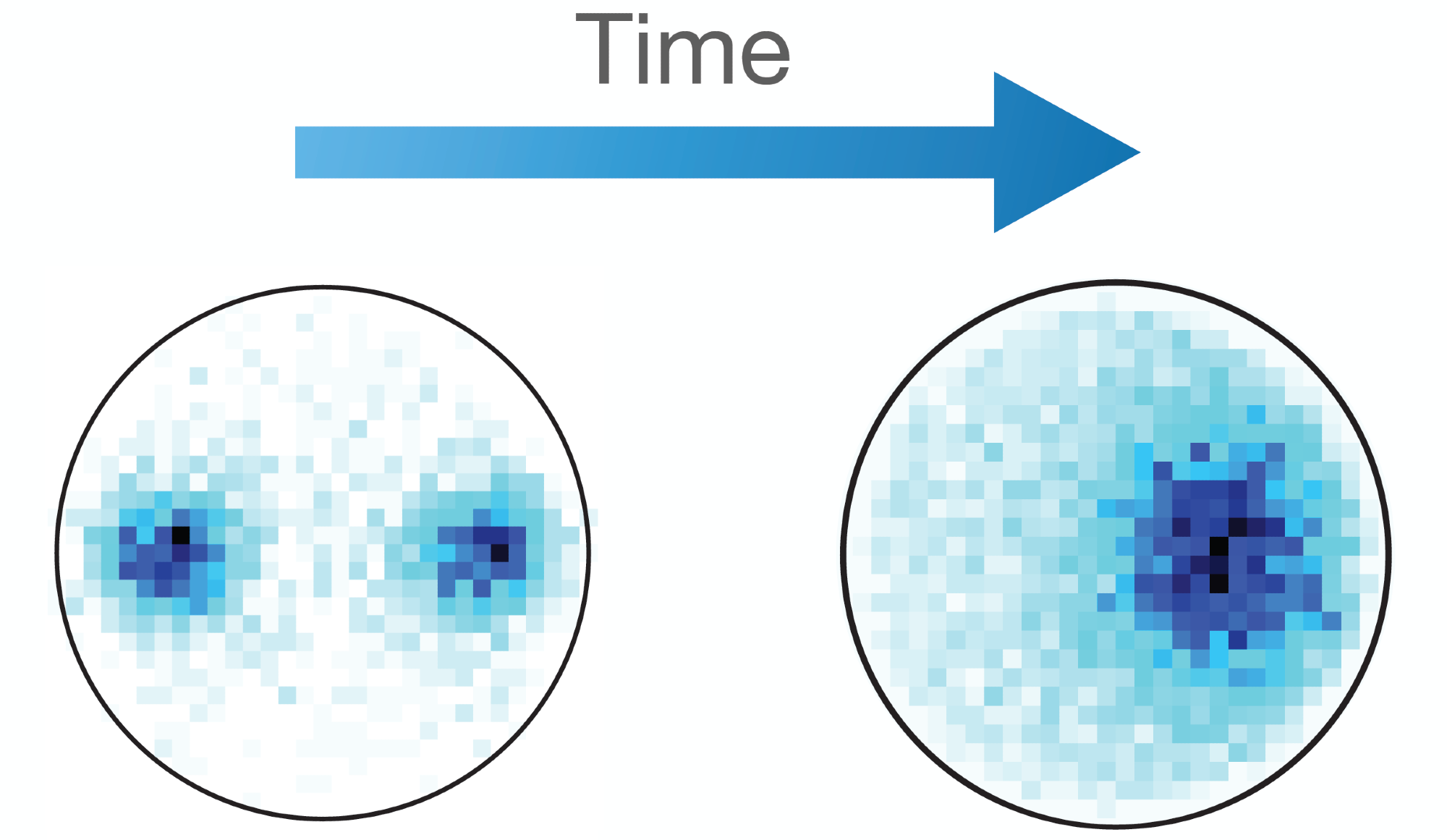Eddies in a peculiar liquid called a superfluid, combine to generate huge vortices, similar to how cyclones form in the turbulent atmosphere.
 Vortices in a superfluid merge rapidly into a single cluster. Image Credit: Matt Reeves.
Vortices in a superfluid merge rapidly into a single cluster. Image Credit: Matt Reeves.
The new study, led by researchers from the University of Queensland, the ARC Centre of Excellence for Engineered Quantum Systems (EQUS), and the ARC Centre of Excellence in Future Low-Energy Electronics Technologies (FLEET), will be crucial for emerging superfluidity-related technological applications like accuracy monitoring.
Dr. Matt Reeves, the team’s lead author and theorist, said the findings provide an experimental analysis of a 70-year-old theory — Nobel Laureate Lars Onsager’s model for two-dimensional vortex equilibrium.
Large, long-lived vortices like cyclones or Jupiter’s Great Red Spot often form out of turbulent fluid flows, such as the atmospheres of planets. Onsager’s model explains the existence of these structures, but so far experiments have tended to conflict with the predictions.
Dr. Matt Reeves, Study Lead Author and Theorist, University of Queensland
“A key complication is that most fluids are viscous, meaning they resist flow. Superfluids, which have no viscosity, are therefore ideal candidates to realize Onsager’s model,” Reeves added.
According to Dr. Tyler Neely, who headed the experiments, the researchers explored the behavior of vortices in a superfluid known as a Bose-Einstein condensate, which is created by cooling a gas of rubidium atoms to colder temperatures.
We created a thin disk of the superfluid and then used lasers to inject vortices at carefully specified locations. The vortices mixed rapidly, merging into a single large cluster in only a few seconds, much like a large cyclone forming from the turbulent atmosphere.
Dr. Tyler Neely, University of Queensland
“However, the most exciting thing was the remarkable agreement between theory and experiment—the theory predicted the shape of the final giant vortex structures in the superfluid exceptionally well. Our results suggest superfluids can be used to learn new things about turbulence and will be crucial for the development of precision sensors based on superfluids,” Neely said.
This research answers some of the important unanswered concerns from the team’s prior work on vortex clusters, which was reported in Science in 2019.
The new study was published in the journal Physical Review X.
Journal Reference:
Reeves, M. T., et al. (2022) Turbulent Relaxation to Equilibrium in a Two-Dimensional Quantum Vortex Gas. Physical Review X. doi.org/10.1103/PhysRevX.12.011031.